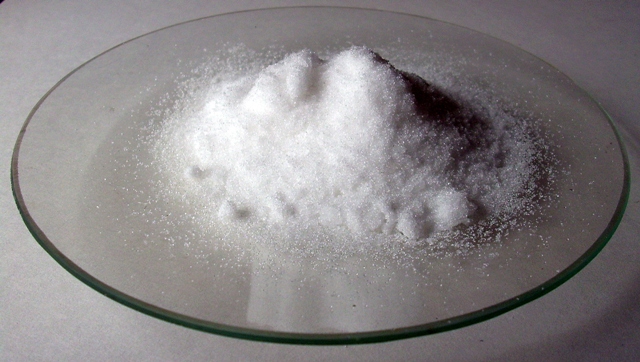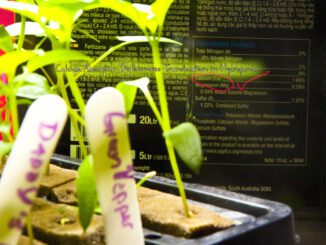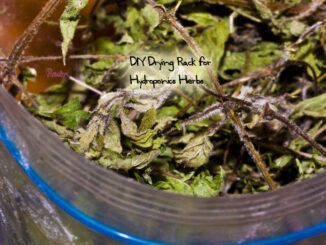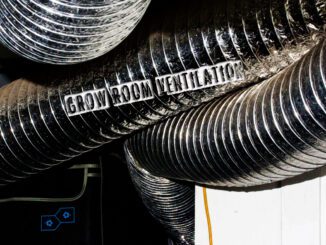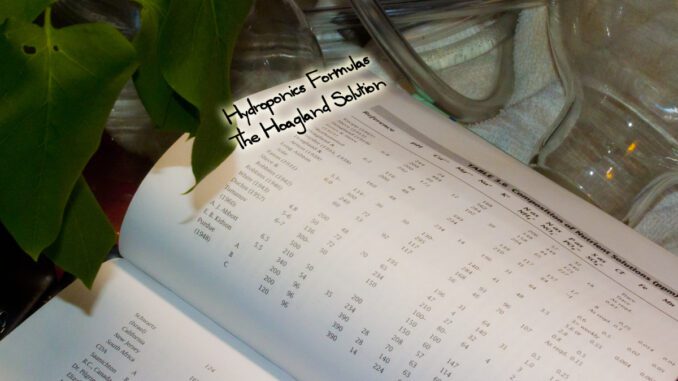
Hydroponics Formulas the Hoagland Solution
By Frazer Love
Want to know “WHY” your nutrients perform?
Understand hydroponics formulas the Hoagland solution and you are on your way to using your favourite hydro nutes more effectively than ever.
Above: Calcium Nitrate (CaNO3); a common hydroponics fertilizer material-soluble and pure.
The Hoagland Solution and Making Sense of Feed Charts
Every company produces their own feed charts.Why? The easy answer is to help the novice grower get a head start into the field of horticulture without the need of tools like a TDS/PPM (Total Dissolved Solids/Parts Per Million) meter.
However, understanding ppm can help us apply these charts with more flexibility and efficiency. It’s a common misconception that the higher the concentration of solution the faster a plant will grow. This, mostly likely, came about due to the idea that hydroponically grown plants feed at a higher rate than soil grown plants.
This is in a sense true, but there is a point of diminishing returns. Push the concentration too high and toxicity symptoms are likely to appear along with nutrient lock out. Lock out occurs when the solute concentrations are higher within the plant than the solute levels within the water/nutrient solution from your reservoir. If this occurs the plant begins to lose stored nutrition through osmotic diffusion.
In practical terms, this means following the high solute concentrations of most feed schedules can easily cause you to overshoot optimal levels. Learn what the plant requires and make educated selections in nutrient solution preparation by understanding elemental ppm.
Meters that measure PPM/EC/TDS may seem like an un-needed expenditure when you’ve got a feed chart to follow, but in actuality you can save money by monitoring your ppm. Meters give the grower a better understanding of how the plant feeds.
Measurements can indicate feed rate which in turn can help a grower identify the proper strength of solution. If you’ve got a water testing facility at your exposure, like your local county extension, then you’ve got an even greater tool at your exposure. Use a water or soil analysis to understand how nutrients are used and fluctuate within the solution over time.
Testing solution samples at various stages of growth can provide a wealth of information that can be used to create a modified feed schedule that suites your plant. In turn, you can use these analyses and apply them to a little known formula developed by Hoagland and Arnon in 1933.
The Hoagland solution contains all essential elements at proper levels for growth in a wide range of plants. Again, like a feed chart, this is a starting point. The Hoagland Solution breaks elements down into their individual ppm levels at ratio in solution. This makes it very easy to tweak certain elemental levels to suit the needs of both the grower and plant. Most commercial growers will hand-mix their own nutrient solutions.
The bottled nutrients you have on your grow room shelf are retail versions of what most professionals make on site. Growers can even store their mixes, but there’s a science behind this too. Keep macronutrients separate from micronutrients. Phosphorus and calcium will remain in separate bottles due to their affinity to form insoluble and unusable calcium phosphate when pH isn’t buffered. This is why most companies do not produce one-part nutrient solutions as much anymore.
Just about all base nutrients produced for the hobby grower have formulas based on the Hoagland Solution. They take this starting point and build on it based on the specific nutritional needs of a plant during various stages of growth. There are many companies that tweak the standard Hoagland to fit the unique needs of a particular plant. Different plants will inevitably feed at different rates and ratios. Although there is flexibility in the structure, there’s also an inherent rigidity.
For example, certain elements like nitrate nitrogen (NO3) and phosphorus (P) have a wide range of acceptable ppm levels, while other elements like ammoniacal nitrogen (NH3-N/NH4-N), potassium (K), and magnesium (Mg) have a much stricter range making deficiencies and toxicities of greater concern.
The Hoagland Solution measures 1.8 EC, but this is far too high for young tender plants and especially for starting seedlings. Knowing the standard EC for most plants helps determine what EC or PPM is proper for your plant while preventing you from overshooting concentrations. Since manufactures have their own specific ratios you’ll want to measure the strength of their “General Purpose” rate. If that rate shows 2.0EC you know they’ve tweaked the levels up slightly for a fast growing blooming annual.
By understanding the Hoagland Solution and how it relates to EC we are able to paint a clearer picture of elemental roles within plants in contrast to the recommended rate of feed charts. It allows you to use just about any premade nutrient mix for any plant. Having a basic understanding of the Hoagland Solution allows every grower to reduce mistakes while understanding what products work and what products can introduce redundancy, toxicities, and deficiencies.
This chart is the basic elemental breakdown of the Hoagland Solution:
- N 210 ppm
- K 235 ppm
- Ca 200 ppm
- P 31 ppm
- S 64 ppm
- Mg 48 ppm
- B 0.5 ppm
- Fe 1 to 5 ppm
- Mn 0.5 ppm
- Zn 0.05 ppm
- Cu 0.02 ppm
- Mo 0.01 ppm
About the Author:
Frazer Love knew his life was etched in stone after…
meeting a fellow UGA student, fully involved in a double major in horticulture and business management. The next step was taking his passion to the next level by packing his college apartment with hydro equipment and mushroom cultivation projects. These home projects turned into a desire to make this his life’s work. Since 2005, Frazer has worked with various hydroponics shops (Atlantis Hydro & Flora Hydro) where he served and serves respectively as the branch manager.
As if working fulltime at a hydro shop wasn’t enough, he started his own CSA. He built Perpetual Harvest from the ground up, literally. This tiny sub-acre urban farm has given Frazer the gift of feeding the stomach and brains of his family and friends. “Through my work and writing I look to inspire others in the hopes that gardening brings them as much peace as it has brought me”
www.facebook.com/PerpetualHarvest
www.facebook.com/FloraHydroponics

